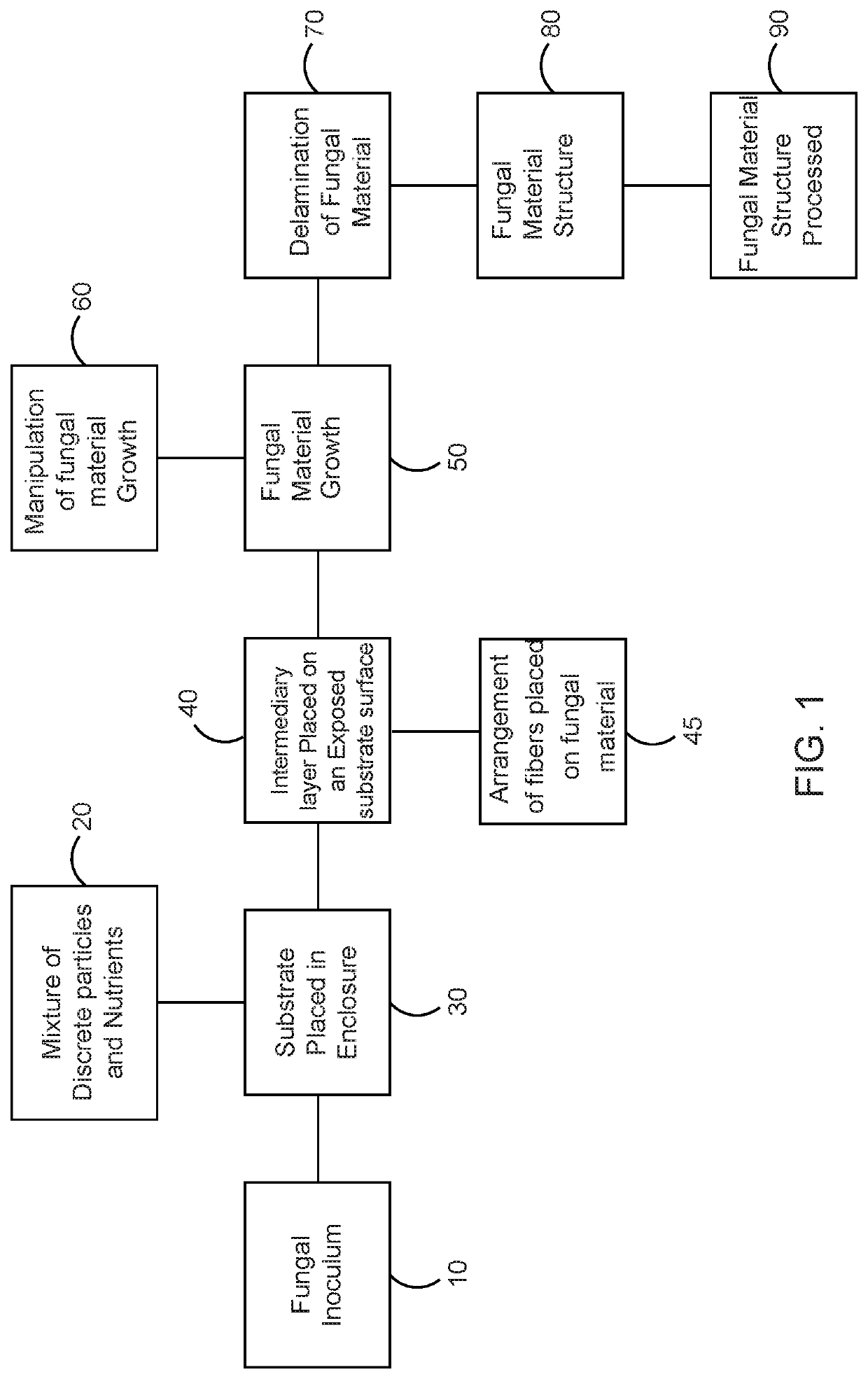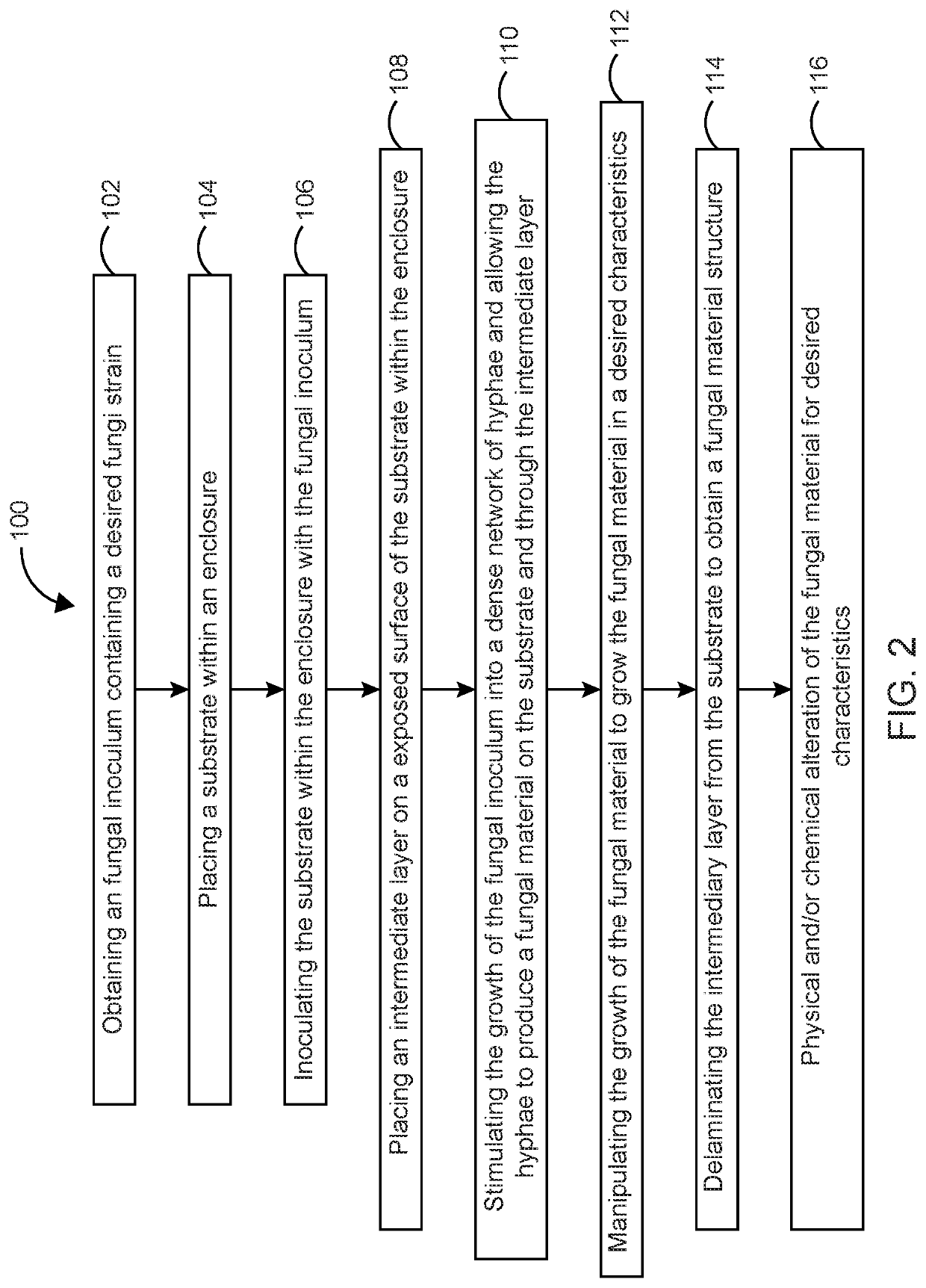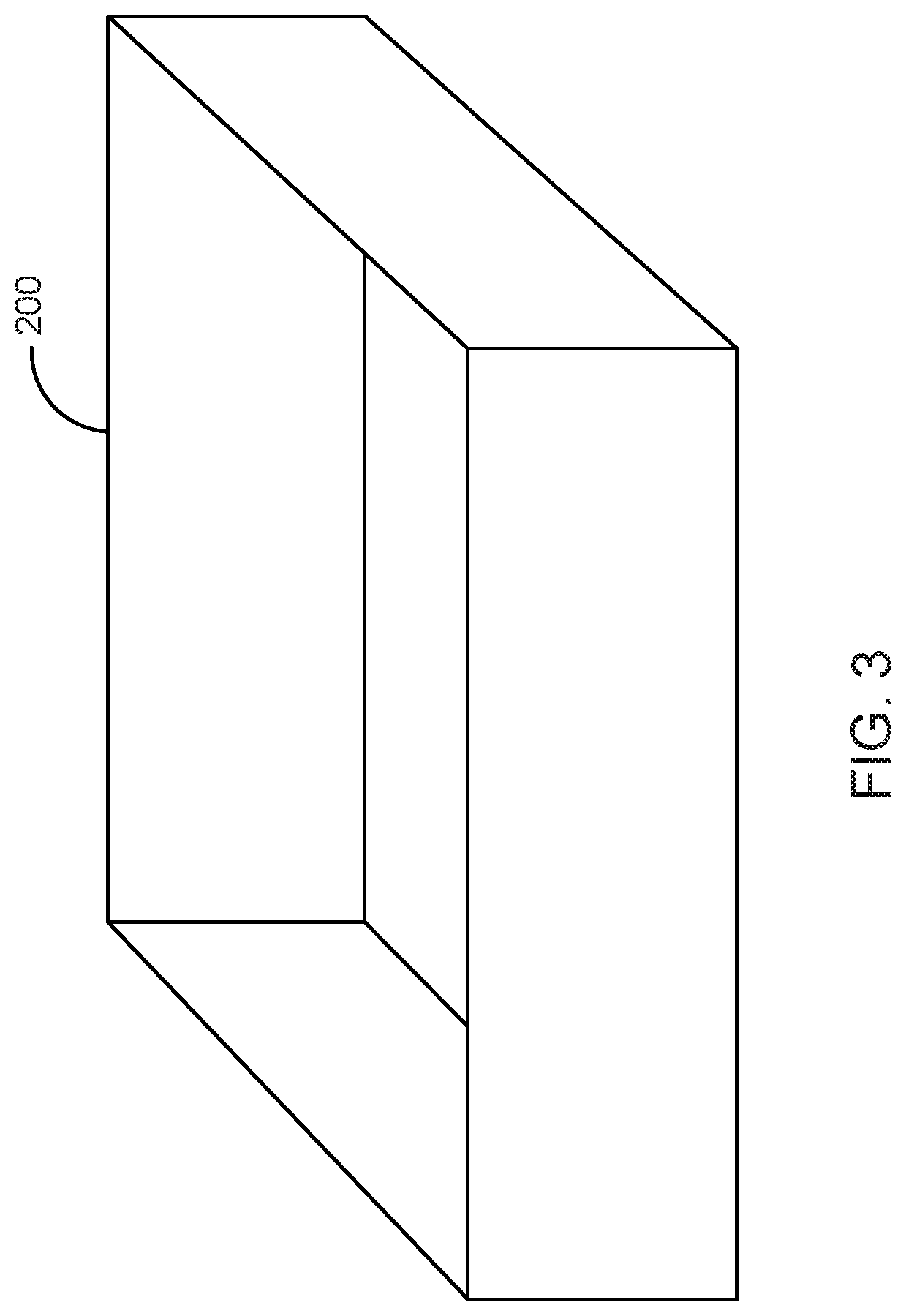Method of producing fungal materials and objects made therefrom
a technology of fungal tissues and materials, applied in the field of methods for growing fungal tissues and objects therefrom, can solve the problems of limited state of the art in the creation of materials composed of fungal tissues in their manufacture, environmental problems of polymeric materials including animal skins and vinyl, and limited conventional methods for the production of materials made from fungal tissues
- Summary
- Abstract
- Description
- Claims
- Application Information
AI Technical Summary
Benefits of technology
Problems solved by technology
Method used
Image
Examples
example 1
[0188]The following example describes one method for producing a flat sheet of fungal material with an embedding composite material for reinforcement.
[0189]Step 1—Obtaining inoculated nutritive vehicle—The nutritive vehicle may consist of at least one of straw, hay, hemp, wool, cotton, rice hulls, recycled hardwood / softwood sawdust, water, calcium carbonate, nitrogen, sugar rich grains, and shrimp shells.
[0190]A given nutritive vehicle of a combination including the above materials is pasteurized and let to cool to room temperature. A tissue culture of the desired fungi strain is introduced and left to propagate throughout the nutritive vehicle. The pasteurization process eliminates or limits competition as the fungus is colonizing the nutritive vehicle. This step is referred to as the colonization of the nutritive vehicle.
[0191]Step 2—Loading nutritive vehicle into growth enclosure—Showing a preferred embodiment, FIG. 3 illustrates a box-like enclosure 200 for placing a nutritive v...
example 2
[0220]A process for making a fungal tissue composite in accordance with certain embodiments of the invention includes:
[0221]Step A—Nutritive Vehicle Preparation
[0222]A.1—mixing of nutrient components and water
[0223]A.2—sterilization or other reduction of biotic load
[0224]A.3—inoculation of nutritive vehicle with mushroom tissue
[0225]A.4—mixing of all components
[0226]Step B—Vessel Preparation
[0227]B.1—filling the vessel with the prepared nutritive vehicle
[0228]B.2—leveling the surface of the nutritive vehicle
[0229]B.3—preparation of intermediate layer
[0230]B.4—placing a lid on the vessel with appropriate environmental controls
[0231]Step C Incubation and Growth of the Fungal Material
[0232]C.1—growth of fungal hyphae through intermediate layer
[0233]C.2—manipulation of hyphae as they are growing
[0234]C.3—placement of fibers, mesh, or other materials on top of growing hyphae
[0235]C.4—manipulation of hyphae as they are growing
[0236]C.5—the environmental conditions may be altered to elicit...
example 3
[0251]The following Example will provide various methods and techniques illustrated in FIG. 13-FIG. 19. This is a process through which hyphae from defined species of filamentous fungi are propagated from a colonizable nutritive vehicle that has been inoculated with said chosen fungi. Preferred species include the Ganodermas, the order Polyporales generally, and including all saprobic types of fungal candidates that derive sustenance from lignin and cellulose rich sources. The invention utilizes an intermediate membrane layer, located between the colonizable nutritive vehicle and the environment into which the fungal hyphal will grow. This intermediate layer can act as both a structural component as well as a means of manipulating the fungal tissue that grows through it, and is instrumental in the delamination and physical removal of the desired fungal tissue that has grown upon the colonizable nutritive vehicle.
[0252]The physical characteristics of growing fungal tissue are manipul...
PUM
 Login to View More
Login to View More Abstract
Description
Claims
Application Information
 Login to View More
Login to View More - R&D
- Intellectual Property
- Life Sciences
- Materials
- Tech Scout
- Unparalleled Data Quality
- Higher Quality Content
- 60% Fewer Hallucinations
Browse by: Latest US Patents, China's latest patents, Technical Efficacy Thesaurus, Application Domain, Technology Topic, Popular Technical Reports.
© 2025 PatSnap. All rights reserved.Legal|Privacy policy|Modern Slavery Act Transparency Statement|Sitemap|About US| Contact US: help@patsnap.com



